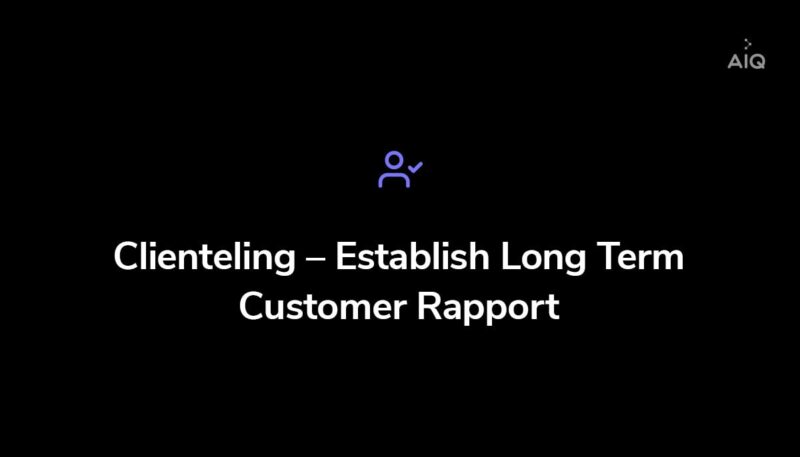How Clienteling Builds Long Lasting Relationships With Your Customers

Covid-19 has altered how consumers shop forever. How consumers shop is evolving faster than ever before, and brands are exploring new ways to bring innovative, exciting and personal shopping experiences to their customers’ digitally and brick and mortar stores. It’s no shock that clienteling is a critical attribute of successful retail businesses. If you aren’t familiar with the terminology, clienteling is the process of using customer information to create intimate and personable shopping experiences. Often referenced at high-end luxury boutiques or working with a personal shopper at Neiman Marcus.
As we know relationships are at the heart of every meaningful experience and the key to growing customer lifetime value. That’s why the orchestration of customer journeys needs to be designed and thoughtful to meet consumers where they are, whenever they want.
Brick and Mortar vs e-Commerce
Brick and mortar retailers are under pressure to rethink the in store experience to maximize profitability. Analysts and e-commerce companies predict that the growing trend of online shopping is here to stay even when the pandemic is over, but that doesn’t mean that shopping in person is going to end.
The rise of online shopping, especially during the pandemic does not mean that customers have completely abandoned the physical store, but it has heightened their expectations around personalize service when they visit. Customers demand personalized, seamless experiences where physical, social and digital commerce converges, giving them the optimal experience.
Leveraging clienteling allows retailers to gather an 360 customer view of shoppers, showcasing customer preference outside of their basic PPI. With outlined detailed customer information in their hands, employees can fully engage the customer with relevant recommendations, upsell opportunities and guidance, attributing to drive transactions while building a strong customer relationship with the shopper.
Callout Text: The COVID-19 pandemic is accelerating the inevitable digital disruption of commerce. Commerce will emerge from the pandemic, a vibrant and critical part of consumer life.” Jason Goldberg, Forbes Contributor.
Redefining the Modern Customer Experience
With data-driven insights, clienteling technology is able to enhance in-store interactions and build long-lasting relationships between loyalty shoppers and brands. By arming sales associations with clienteling software, stores can empower a more personalized retail experience.
Knix
Intimate apparel brand Knix launched digital versions of traditional physical experiences, a virtual fitting room and virtual warehouse sales. Customers would be able to book a 20-minute consultation, and receive a message introducing them to their “Knixpert,” one of the company’s in-store retail sales associates who interacts with shoppers to find the right garment. Customers learn how to take their measurements accurately, and find the right size and fit.
Rent the Runway
The largest designer rental destination allows consumers to explore different styles, discover designers, and try on clothing and accessories before committing to buy. The mobile-first experience is heavily integrated within the Rent the Runway business model. The clienteling app offers a real-time view of the store’s inventory, and RTR Concierge, which lets customers quickly interact with employees. Customers can even use the app to pre-select the clothes they want to try on before they visit the store. This clienteling strategy has the clear edge over other luxury retailers.
Williams-Sonoma
Williams-Sonoma has transformed its in-store experience to keep up with its customers’ expectations. Already a power-house in UGC and social selling, Williams-Sonoma acquired augmented reality startup Outward for $112 million. Using Outward’s technology, Williams-Sonoma created VR and AR rooms that allow customers to see how potential purchases would look in their home.
Warby Parker
Warby Parker, the distinctive eyewear company which originally started out as a “home try-on program”, knew the importance of incorporating a social experience in assisting customers. Human beings crave the interaction of other people during their shopping experience. They’ve integrated their online and offline experiences with channel retailing. Every Warby store has a concierge desk and a brand educated store associate. iPad in hand and blue medical coat, each associate is ready to access customer accounts and inquiries.
Callout – 75% of people that buy something in our store have been to our website first. What they really value is convenience so we invested in technology to make the online and offline omnichannel experience as convenient as possible. – Co-founder Dave Gilboa, Warby Parker
Takeaway
Digital technologies, channels and software that can enable self-directed clienteling experience include:
- In-store beacons that transform the in-store shopping experience via targeted push notifications, in-app chat, and targeted SMS messages
- Visualization of online and store inventory to provide product recommendations for off-shelf or out-of-stock products
- AR and VR support for retailers looking to digitize their in-person selling
Sales Associate Enablement
Sales associates cannot rely on memory or making notes on a piece of paper alone to create new sales based on customer insight. According to Gartner, sellers who have embraced digital personalization saw their number of items per order increase up to 50%, average order values up to 53% and customer conversion rates up to 33%. With rich customer information at their fingertips on a tablet, store associates move from processing transactions to building authentic relationships driven by customer data. Leveraging your CRM and CDP, these machine learning solutions integrate data from promotional offers, content library and POS to build a unified customer view that can help marketers, product and support teams make informed decisions directly from the sales floor.
Clienteling best practices demand the best Customer Data Platform and CRM
Retailers work hard to cultivate a genuine customer experience. The last thing they would want is for a customer to jump ship. Implementing advanced clienteling tools allow customers the 1-to-1 attention that keeps them engaged, interesting and sharing their experience. ActionIQ for retail connects retailers to shoppers with the means to ingest, align and deploy communications that are relevant.
Learn More About Boosting Customer Loyalty
Reach out to our CDP experts and we’ll answer your questions around building loyalty with your customer base.





